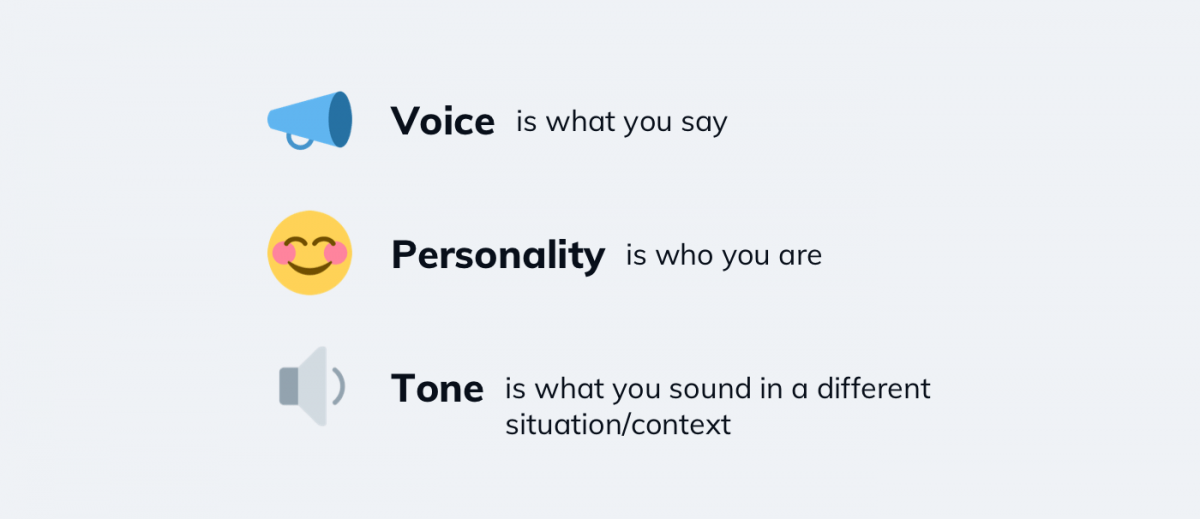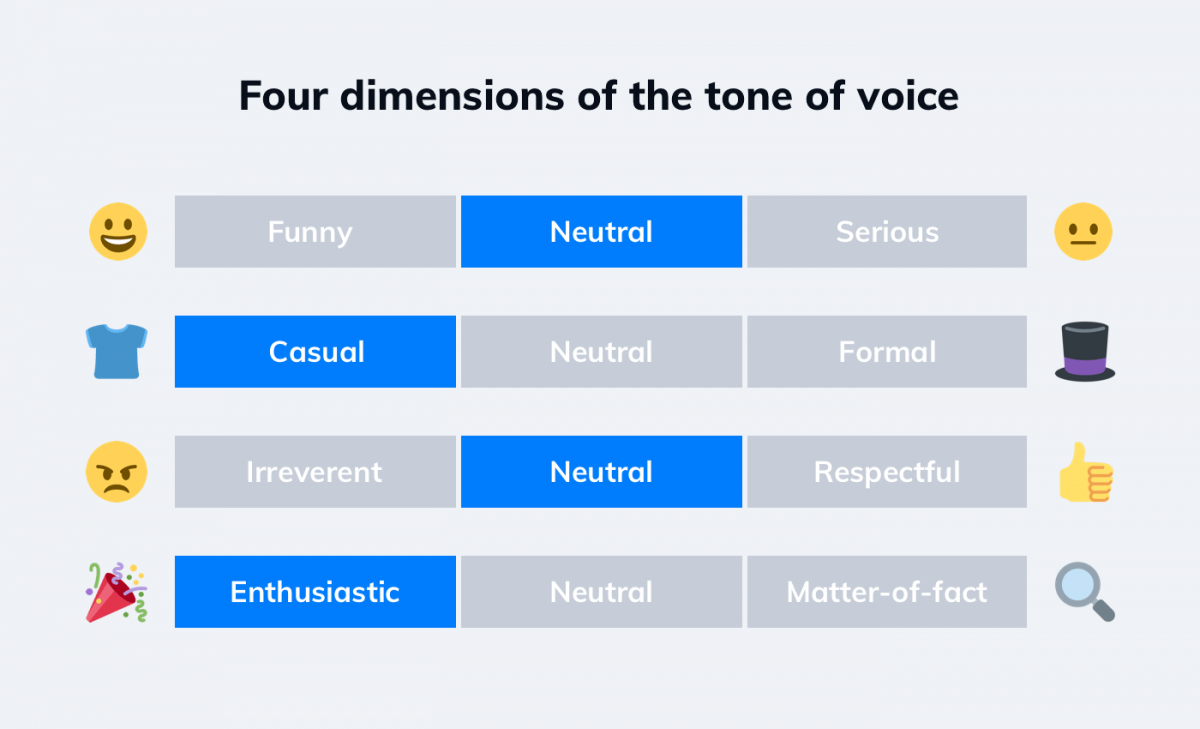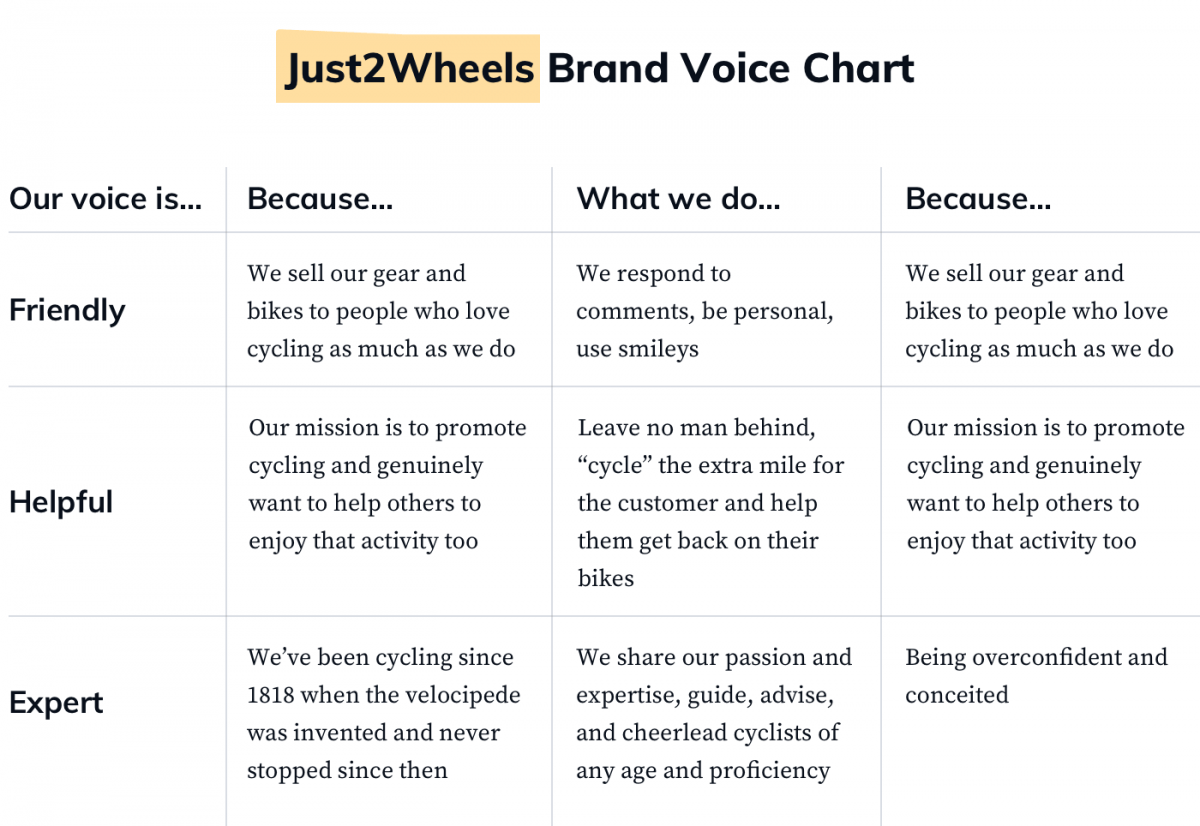Imagine yourself standing in the crowd of public protesters.
Each person is chanting the same words of objection against a certain socio-political event(s). Some people are chanting louder while somebody else’s voice is fainter, but nonetheless, everyone rhythmically repeats the same slogans.
The voice of the crowd becomes one.
Amid the crowd, there is also a leader who uses a megaphone to ensure that the words are heard loud and clear. The leader’s tone is raised and angry, only to show how serious and unsatisfied people are.
The leader’s words resonate in the protesters’ minds because he or she speaks of the values and goals everyone shares.
Now imagine we are talking about your company.
The protesters are your customers and your company is the leader. The leader uses the megaphone to reach a wider audience, similarly, companies use multiple touchpoints (emails, social media, website, etc.) to reach more customers.
You and your customers share certain values. It is your voice that translates these values into words, and you who add a tone to the messages for everyone to identify with.
So what does your company’s voice sound like?
What Is The Brand Voice?
Shh, can you hear that?
Beep-beepee-beeppee…
Classic…
But no — this is not what the brand voice is.
Sorry. But I hope you enjoyed the tune.
The voice is about the choice of words. Words shape the unique way we communicate with everyone and they can tell quite a lot about who we are.
The concept of voice is no different when applied to the brand. The voice of the brand expresses the personality of the company, the values, and the attitude. Therefore, you must be careful with the choice of words. To structure your brand voice effectively, you must also consider the importance of managing brand portfolio. A well-defined brand architecture can bring clarity and guidance to how each segment of your company should communicate while ensuring it aligns with your overarching mission and goals.
What’s more, words must also go in pair with your customers (target audience) otherwise it will be hard for them to identify with your brand.
Is it youth? What kind of young people are they? Are they rebellious or compassionate? Or perhaps your customers are mainly housewives? Do you know what kind of language does your audience normally uses and what are their values?
The Brand Voice Is Consistent Across All Touchpoints
Think of a brand as a living person who is alive and speaks. That person should communicate in the same manner whenever he or she talks on the phone, sends an email, creates an entry on the website, writes a post on a social media platform, contacts the customer via a live chat, etc.
That person should be taught certain vocabulary that your company identifies with and be consistent with using it throughout all the touchpoints.
Brand voice applies to all content created by your staff, including messages sent by chatbots. Although chatbots are not humans, they are also part of the dialogue held between your brand and the customers so make sure that they use the right words, too.
The Brand Voice Speaks Your Customers’ Language
To communicate well, it’s best to use a common vocabulary to show your audience that you pursue the same values as they do (e.g freedom, ecology, courage, love, independence).
The brand should always strive to serve the customers and to do it well you should know who you intend to serve.
- Who are they?
- How do they behave?
- What makes them tick?
- What can you do to provide some value to them?/How will your brand make their lives better?
- Do you deliver frictionless customer experience?
Reach them at a personal level, ask them for feedback, prove that you care and you want to become better. Show them what drives you, what you care about, what you love, what you stand for or against – speak and connect with them.
The more your voice becomes familiar to the voice of your audience, the easier it will be for them to bond and identify with your brand.
The Brand Voice Speaks As One
The main objective of the brand voice is to formulate a coherent personality behind your company.
As already mentioned, the voice must be consistent, so it doesn’t matter if the customer receives an email from the billing department and later on a phone call from the customer support – the brand voice used in both situations by different people must be the same.

Just like the protesters fighting for a certain cause as one, the brand voice must contain all the touchpoints in itself to send messages that would not contradict each other.
Voice is consistent – if your personality is a leader, then you remain the leader. Your mood (tone), however, may change depending on the situation.
What Is The Brand Tone?
If the brand voice was about what we say, the tone of voice is about how we say it. The tone of voice is the pace of the words, the rhythm, and even their order.

The tone is normally adjusted to various situations. In real life, we use different tones depending on who we are talking to.
The tone of voice is how the personality of your business comes through the words you use (in written and spoken communication). With the words, you convey the meaning, but it is the tone that adds the everlasting impression you make on the recipient.
Just like when you read a good book, the story sets you in a certain mood – you can be sad, amused, intrigued, or thrilled. Your brand should also tell a story and evoke a certain mood in people.
Four Dimensions of the Tone of Voice
Nielsen Norman Group identified four dimensions of the tone of voice:
- Funny vs. serious
- Formal vs. casual
- Respectful vs. irreverent
- Enthusiastic vs. matter-of-fact

Let’s assume that your voice is quirky – what kind of tone would use go for? For example, you could communicate with your customers using puns and jokes (i.e, use a casual or funny tone).
Why Are Brand Voice And Brand Tone Of Voice Important?
There are numerous reasons for building a brand with a strong and distinctive voice and tone:
- They Create Bonds With Your Customers
- The Make Your Company More “Human”
- They Build Trust
- They Build Authority
- They Set You Apart From Your Competitors
They Create Bonds With Your Customers
When we, as humans, deal with another person, we naturally prefer those who have similar personalities. When we recognize such a person, we feel more eager to bond with them.
According to the BrandZ study, “Bonding is the highest level of attitudinal loyalty; when people are bonded to a brand, they feel the brand is closer, more meaningfully different, and hence more valuable to them.”
Moreover, another study revealed that 65% of customers claim to be emotionally connected to a brand. The stronger the bond, the higher the customer loyalty and the lower the likelihood that the customer will turn to the competitor.
How is such a bond created?
- Customers perceive better those brands that share the same values
- When the customers feel that the company cares about them (and a great customer service is a key to achieve that)
- Customers who perceive the brand as desirable, by using the company’s product or service, feel more special (as if belonging to an elite club)
- Brands that are perceived as strong give customers higher confidence that the company’s products/services are good quality
- Sell positive stories, not just products. The act of purchase is often connected with some emotions that need to be fulfilled – how will the customers’ emotions change when they buy your product? Will they feel empowered? More confident? Amazed?
The Make Your Company More “Human”
Business is about people – built by the people and for the people. But the very concept of a brand is quite abstract so it’s worth spending some time and effort to show the customers that there are real humans behind the company’s name.
What can you do to “humanize” your company’s image?
- Show your brand from a personal perspective – be personal in your marketing, advertising, and during your regular interactions with customers
- Don’t use generic, dull responses – rather, encourage your staff to speak from their hearts, let them show the customers that the staff on all levels share the company values
- Be present during social/community events. This way you not only boost brand awareness but also show the real faces that can be associated with the company. You can also support the noble campaigns that represent the values you believe in too
They Build Trust
Trust retains customers, trust creates bonds – loss of trust means loss of monetary income and loss of competitive advantage.
Trust is not a pretty website, discounts, and ads. These can attract new customers but they are not enough to keep them. Trust is a long-run investment that takes time.
How can you build trust with your customers?
- Be transparent – if you declare that you stand for something, don’t take any actions that would contradict your words
- Be personal – talk to the customers as a human, not as someone who tries to make a sales pitch
- Be helpful – the customer should feel confident that they can rely on your services and support
- Know your product/services – customers trust that you are an expert in the products or services you sell so any poor service will diminish that belief
They Build Authority
What if the demonstration leader would shout the words of the people’s anger and dissatisfaction with a dull and sheepy voice? Would people identify with such a person?
Unlikely.
What if the leader’s voice was strong, authoritative, and confident?
Very likely.
The voice and the tone of voice are a powerful medium that carries the brand authority and beliefs. Your brand must build confidence in the audience, prove that you know what you are talking about.
Also, keep in mind that people are very sensitive to what they hear and voice and tone build a certain impression in their minds about the speaker. With well-selected words and tone, you can impress, persuade, or influence people — or simply put them off.
They Set You Apart From Your Competitors
In a day to day life, we use our own style of speech and writing that tells us apart from the others. A brand’s voice must also be distinctive and easy to recognize by the potential audience.
What makes your brand unique?
- Culture-bound vocabulary and expressions
- Dialects
- Favorite expressions
- Pace, intonation, rhythm
- Facial expressions
A unique brand voice and brand tone of voice give you the best chance of connecting with your customers and prevent your brand from drowning in the ocean of competitors.
How To Find Your Brand Voice?
Now that we have defined what a brand voice and tone of voice are and why they are important, the final question remains to be answered: how can you find your unique voice?
Your unique voice is not based on passing trends or personal whim but something you believe would reflect your values and what you want the company to represent.
And secondly, do not forget that the brand voice stands for a certain personality with a goal of communicating as one with your customers, meaning that the voice must be coherent with the voice of your audience.
Answering the questions stated below will help you on your quest of finding the voice for your brand:
1. Why Did You Set Up Your Company?
What was the reason that made you set up your own business in the first place (putting aside monetary aspect)? What drives you to continue building and nurturing it? What are the values you want your brand to represent?
As an example, think about Elon Musk’s driving factor – was it the cars he wanted to sell or drill some underground tunnels? Not exactly. His mission was to change the world and anticipate a better future for all of us.
Your mission doesn’t need to be big but must be meaningful to you – identify it and put it in simple words. This will allow you to create a mission statement for your staff and customers to follow.
2. Who Is Your Audience?
Secondly, think about who you want to share your goal with. Who will benefit from the products or services you deliver?
Research your audience properly and find out as much as you can about them:
- What are their habits and behavioral patterns?
- What are their needs and pains?
- How do they talk?
- What are their age (generation) and gender?
- What are their education and interests?
- What are their occupations?
- What are their preferable touchpoints (mobile apps, emails, social media)?
- What content do they like and dislike?/What do they value?
- Create a persona of your customers
3. What Is Your Current Voice?
If you already have some content created (blog articles, social media posts, emails, live chat transcripts, video, etc), it might be valuable to audit them to find out what voice has been used so far.
- Can you spot any recurring patterns in the messages and tone(s)?
- Is your current voice consistent and coherent?
- Does it fit your business values and mission?
- How can it be improved?
When doing your audit, do pay particular attention to the already-released pieces of content that turned out to be successful among your customers – perhaps this pattern is worth keeping and requires only slight adjustments to fit your new voice.
You can take the audit one step further and ask your customers how they perceive your brand. For instance, ask them:
- How would they describe your company/brand?
- How would they describe the tone of your staff that was used to communicate with them?
- How would they describe your brand’s personality?
At this step, you may also identify those elements of the brand voice you find irrelevant.
4. What Will Your Brand Voice Sound?
Once you have gathered all the pieces from the previous steps, it’s time to put them into one coherent whole.
Let’s take that you have identified 3 words that reflect the personality of your brand:

Here, the main characteristics of the voice were combined into a single chart for a clear reference.
Now, it’s time to implement and document the brand voice.
Brand Voice: Implementation And Documentation
The starting point of implementation is the creation of guidelines that will help you and your teams across different departments to use the same voice.
The brand voice is not something that is set in stone forever. If you decide to, for instance, change your target audience, the guidelines should be reviewed and updated.
To help your teams to use the voice confidently on all channels, consider including the following when creating the brand voice guidelines:
- Correct and incorrect voice use examples
- Brand voice examples of use in different situations
- Description of the persona
- Brand voice chart
- Vocabulary, grammar rules
- Mission statement
- Company’s Core Values
You may also put the theory into practice and write the guidelines using the new brand voice.
Below, you can find a few excellent examples of the brand voice guidelines to serve as an inspiration and example of good practices:
Brand Voice: Conclusions
A brand voice expresses your company’s unique personality, attitude, mission, and values. It can build a positive image in your customers’ eyes by adding a human factor to the company.
The voice should be used consistently across all communication channels to allow the audience to familiarize themselves with your brand as if they would with another person.
To maintain a coherent and consistent voice, you can create a brand voice chart and guidelines for your employees to follow.
And finally, keep in mind the tone of voice – it adds an emotional element to the communication and should be adjusted to the context and situation in which the brand voice is used.

